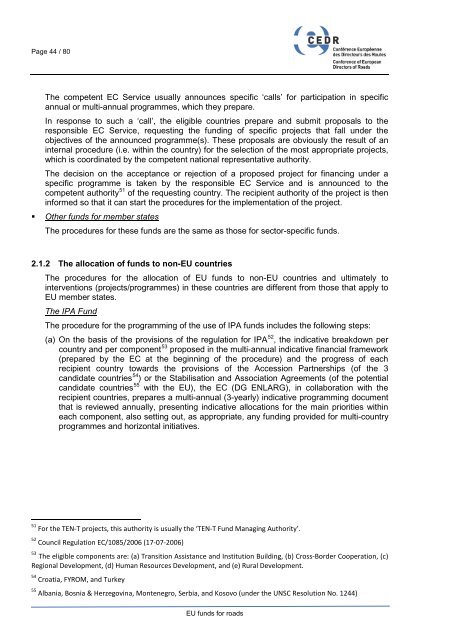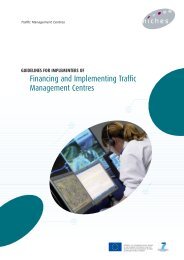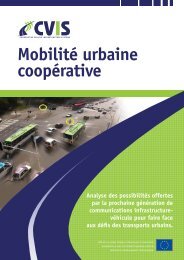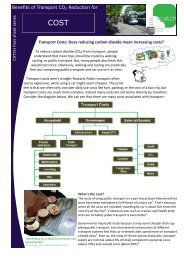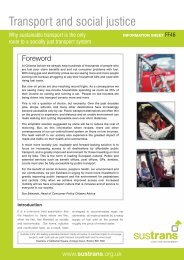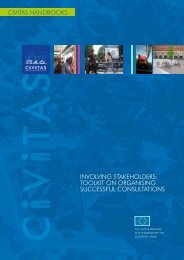EU funds for roads - CEDR
EU funds for roads - CEDR
EU funds for roads - CEDR
You also want an ePaper? Increase the reach of your titles
YUMPU automatically turns print PDFs into web optimized ePapers that Google loves.
Page 44 / 80<br />
The competent EC Service usually announces specific ‘calls’ <strong>for</strong> participation in specific<br />
annual or multi-annual programmes, which they prepare.<br />
In response to such a ‘call’, the eligible countries prepare and submit proposals to the<br />
responsible EC Service, requesting the funding of specific projects that fall under the<br />
objectives of the announced programme(s). These proposals are obviously the result of an<br />
internal procedure (i.e. within the country) <strong>for</strong> the selection of the most appropriate projects,<br />
which is coordinated by the competent national representative authority.<br />
The decision on the acceptance or rejection of a proposed project <strong>for</strong> financing under a<br />
specific programme is taken by the responsible EC Service and is announced to the<br />
competent authority 51 of the requesting country. The recipient authority of the project is then<br />
in<strong>for</strong>med so that it can start the procedures <strong>for</strong> the implementation of the project.<br />
• Other <strong>funds</strong> <strong>for</strong> member states<br />
The procedures <strong>for</strong> these <strong>funds</strong> are the same as those <strong>for</strong> sector-specific <strong>funds</strong>.<br />
2.1.2 The allocation of <strong>funds</strong> to non-<strong>EU</strong> countries<br />
The procedures <strong>for</strong> the allocation of <strong>EU</strong> <strong>funds</strong> to non-<strong>EU</strong> countries and ultimately to<br />
interventions (projects/programmes) in these countries are different from those that apply to<br />
<strong>EU</strong> member states.<br />
The IPA Fund<br />
The procedure <strong>for</strong> the programming of the use of IPA <strong>funds</strong> includes the following steps:<br />
(a) On the basis of the provisions of the regulation <strong>for</strong> IPA 52 , the indicative breakdown per<br />
country and per component 53 proposed in the multi-annual indicative financial framework<br />
(prepared by the EC at the beginning of the procedure) and the progress of each<br />
recipient country towards the provisions of the Accession Partnerships (of the 3<br />
candidate countries 54 ) or the Stabilisation and Association Agreements (of the potential<br />
candidate countries 55 with the <strong>EU</strong>), the EC (DG ENLARG), in collaboration with the<br />
recipient countries, prepares a multi-annual (3-yearly) indicative programming document<br />
that is reviewed annually, presenting indicative allocations <strong>for</strong> the main priorities within<br />
each component, also setting out, as appropriate, any funding provided <strong>for</strong> multi-country<br />
programmes and horizontal initiatives.<br />
51 For the TEN-T projects, this authority is usually the ‘TEN-T Fund Managing Authority’.<br />
52 Council Regulation EC/1085/2006 (17-07-2006)<br />
53 The eligible components are: (a) Transition Assistance and Institution Building, (b) Cross-Border Cooperation, (c)<br />
Regional Development, (d) Human Resources Development, and (e) Rural Development.<br />
54 Croatia, FYROM, and Turkey<br />
55 Albania, Bosnia & Herzegovina, Montenegro, Serbia, and Kosovo (under the UNSC Resolution No. 1244)<br />
<strong>EU</strong> <strong>funds</strong> <strong>for</strong> <strong>roads</strong>


